Gen 2 Ridgeline cools with R-1234yf
By Steve Schaeber, MACS Technical Editor
The 2017 Ridgeline is the second generation of Honda’s midsize pickup truck, redesigned and brought back in June 2016 following a short 2 year production hiatus. Like other manufacturers who are introducing new vehicles or platforms this year, Honda started using the new R-1234yf A/C refrigerant in the new Ridgeline ahead of mandatory EPA regulations set to take effect in a few years.
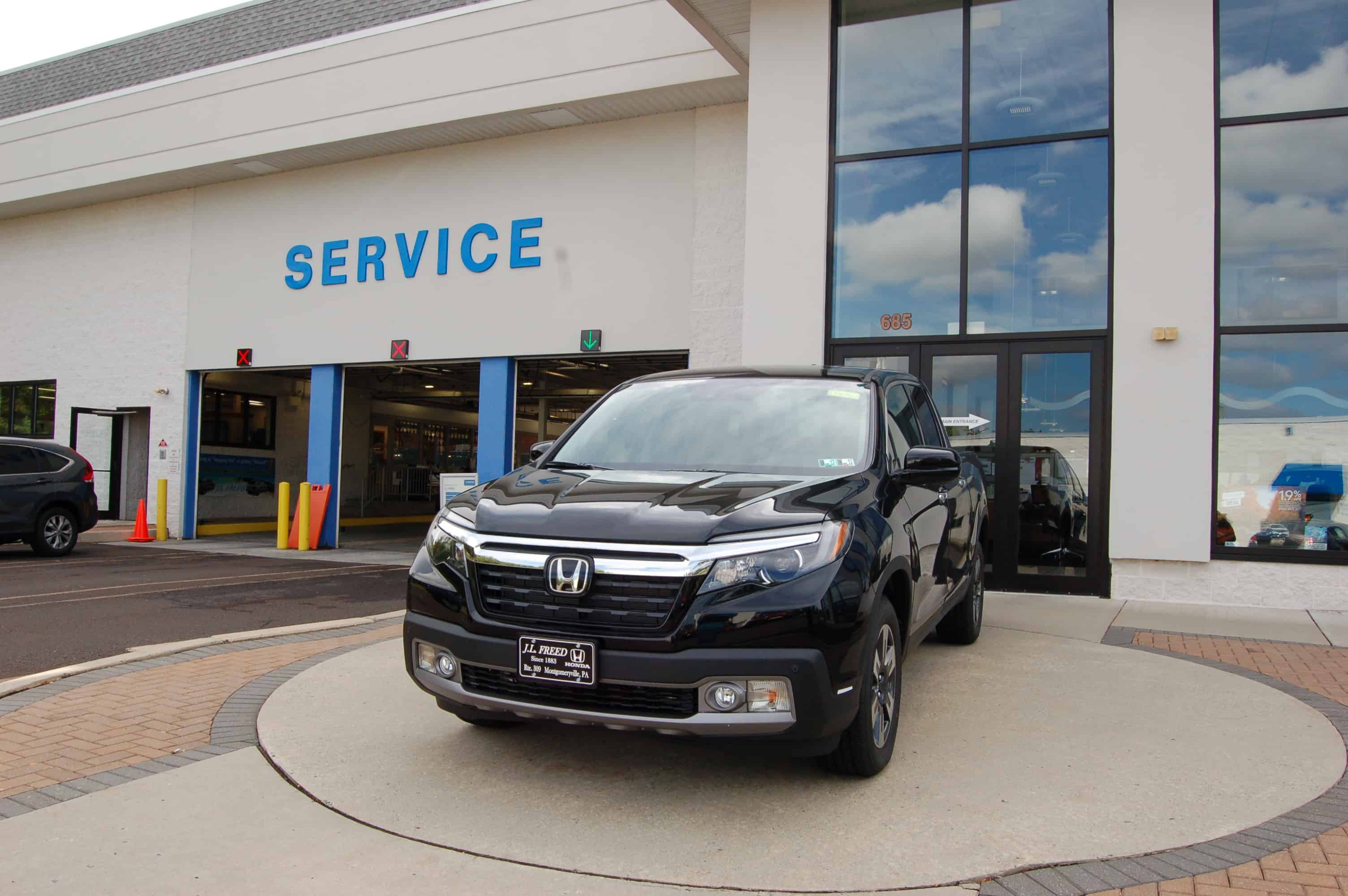
Honda redesigned their Ridgeline midsize truck for the 2017 model year and began shipping them to dealers back in June.
Staying on top of these new developments with R-1234yf, MACS paid a visit on September 28th to our local Honda dealer, J.L. Freed in Montgomeryville, PA to check out what Honda’s been up to with the new refrigerant. We’ve talked to several members over the last few months that have been working on 2016 model year Hondas with R-1234yf, but we wanted to go check them out for ourselves. We were lucky too, because on the day we stopped by for our photo shoot, we ran into owner Donald Franks, who showed us around and introduced us to a few of their service department personnel.
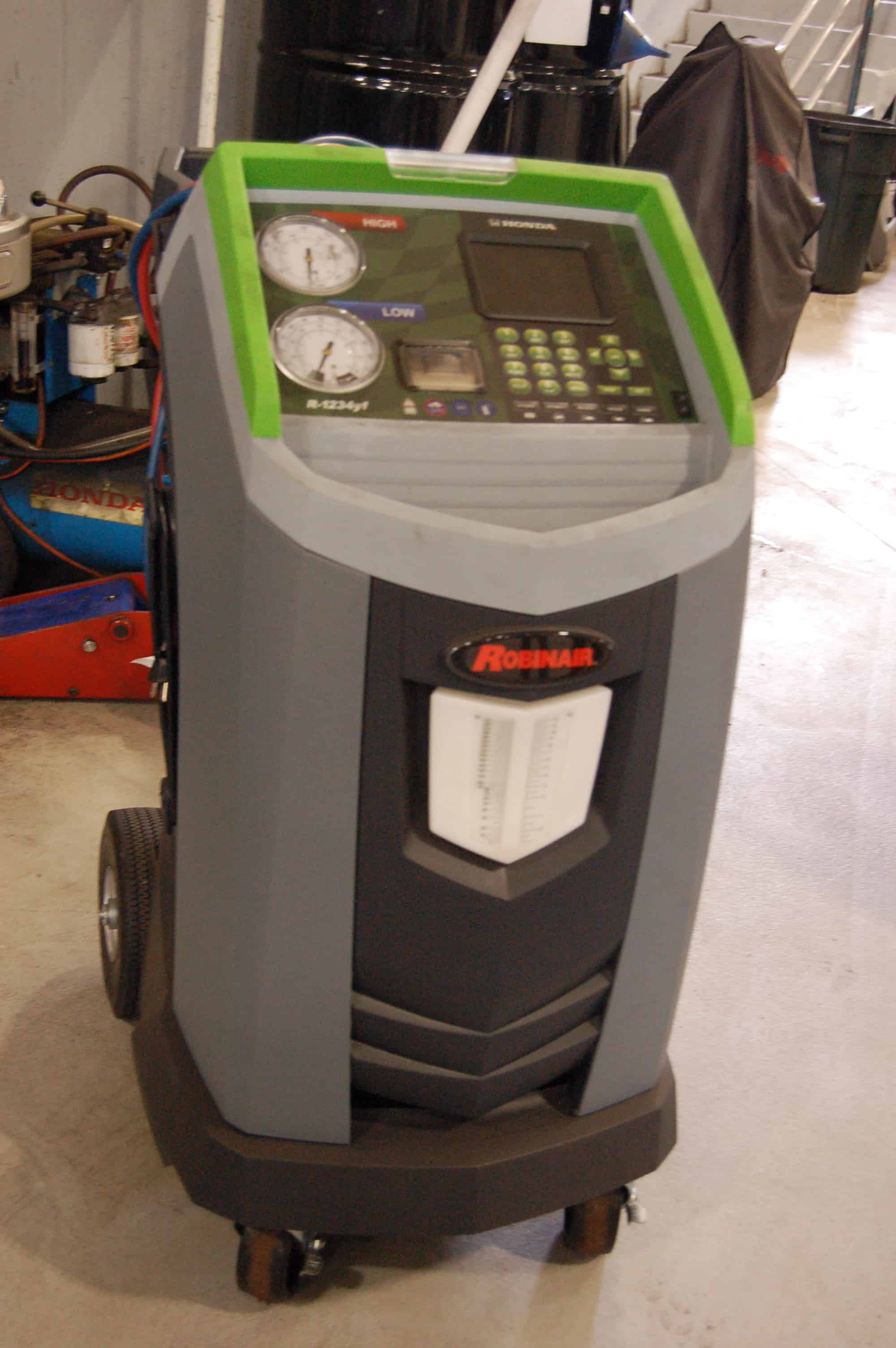
The service department at J.L. Freed has had their Robinair yf machine for about 2 years now, but it’s only recently that they’ve had more use for it. Like other A/C service shops, they pretty much only need it when auto body repairs call for an evacuation or recharge, usually due to condenser replacement following an accident. A recent vehicle they worked on was on a 2017 Ridgeline that only had 100 miles on it and was in a front end collision. Sad, indeed.
If you read further into the caption above, you might wonder why a Honda dealer in PA would have had a yf R/R/R machine for the past two years, considering that they’ve only been selling yf cars in this state for a few months. While it’s true that most US dealers have only been selling yf cars since earlier this year, keep in mind that Honda has been leasing the recently discontinued Fit EV at certified dealers in California and Oregon since June 2012 as a 2013 model. In fact, following Cadillac who introduced the first yf car to American buyers, Honda Fit EV was the second ever yf car in the US, followed by the Chevy Spark EV in June 2013. Leases were later offered in a few northeastern states that year, including PA’s neighbor New Jersey. Even though Fit EV cars only have a range of about 100 miles per charge, it’s still possible (and very likely) that a driver would take theirs on a long trip out of state. So in an effort to “be prepared” to service their customer’s vehicles no matter where they may be driven to, certain Honda dealers across the US were designated as Certified Fit EV repair shops, specifically by training certain technicians to work on them. JL Freed Honda joined that program, and since the Fit EV has an R-1234yf A/C system, they needed a yf machine to comply.
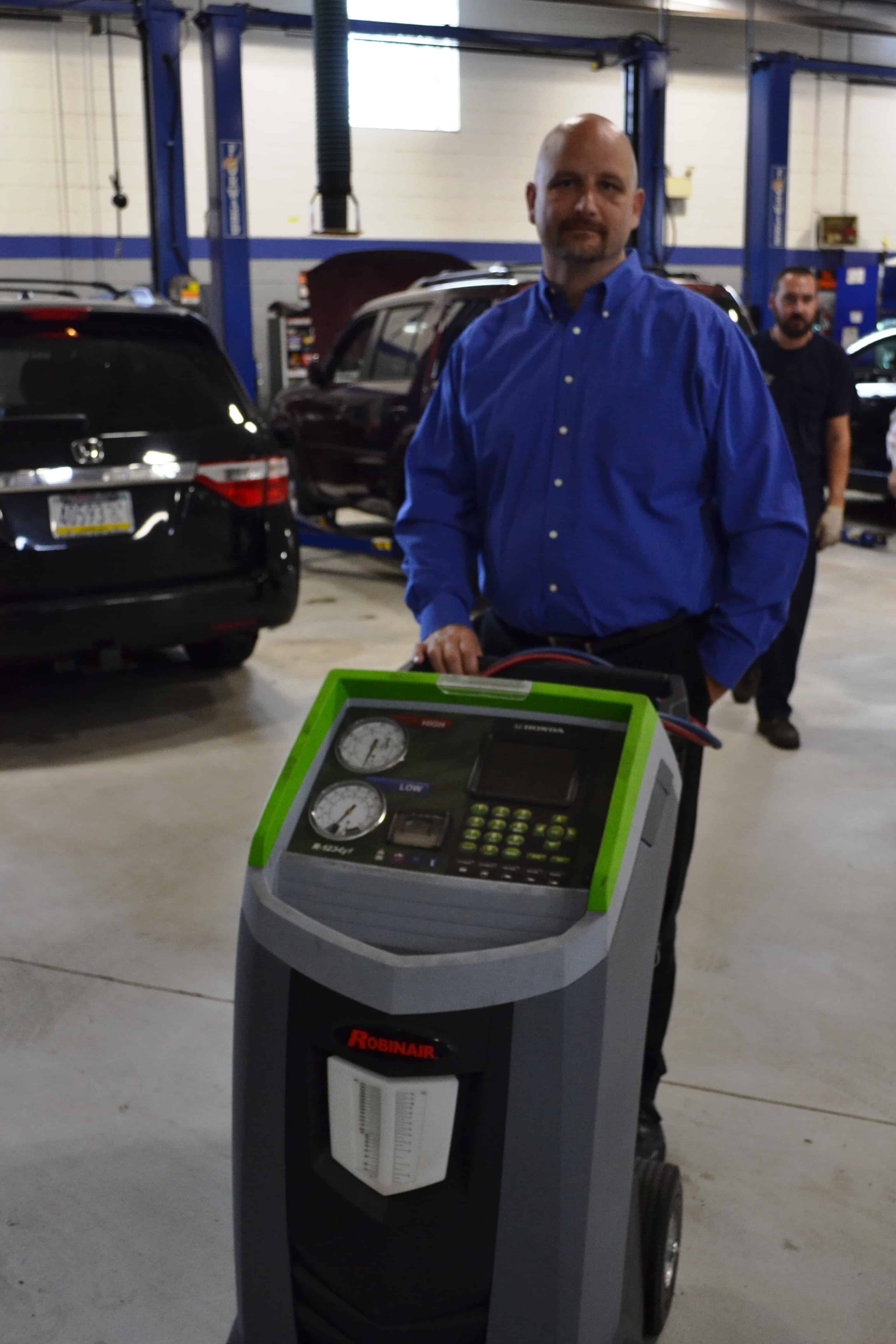
“Purchasing our yf machine has been a good move for us so far, particularly since we’re seeing so many models being changed over to use the new refrigerant,” said Service Manager Matthew Beatty as he showed us their Robinair machine. Being an early adopter just makes them that much more prepared to work on these new systems, which have so far primarily been limited to leak testing, evacuating and recharging after crash repairs.
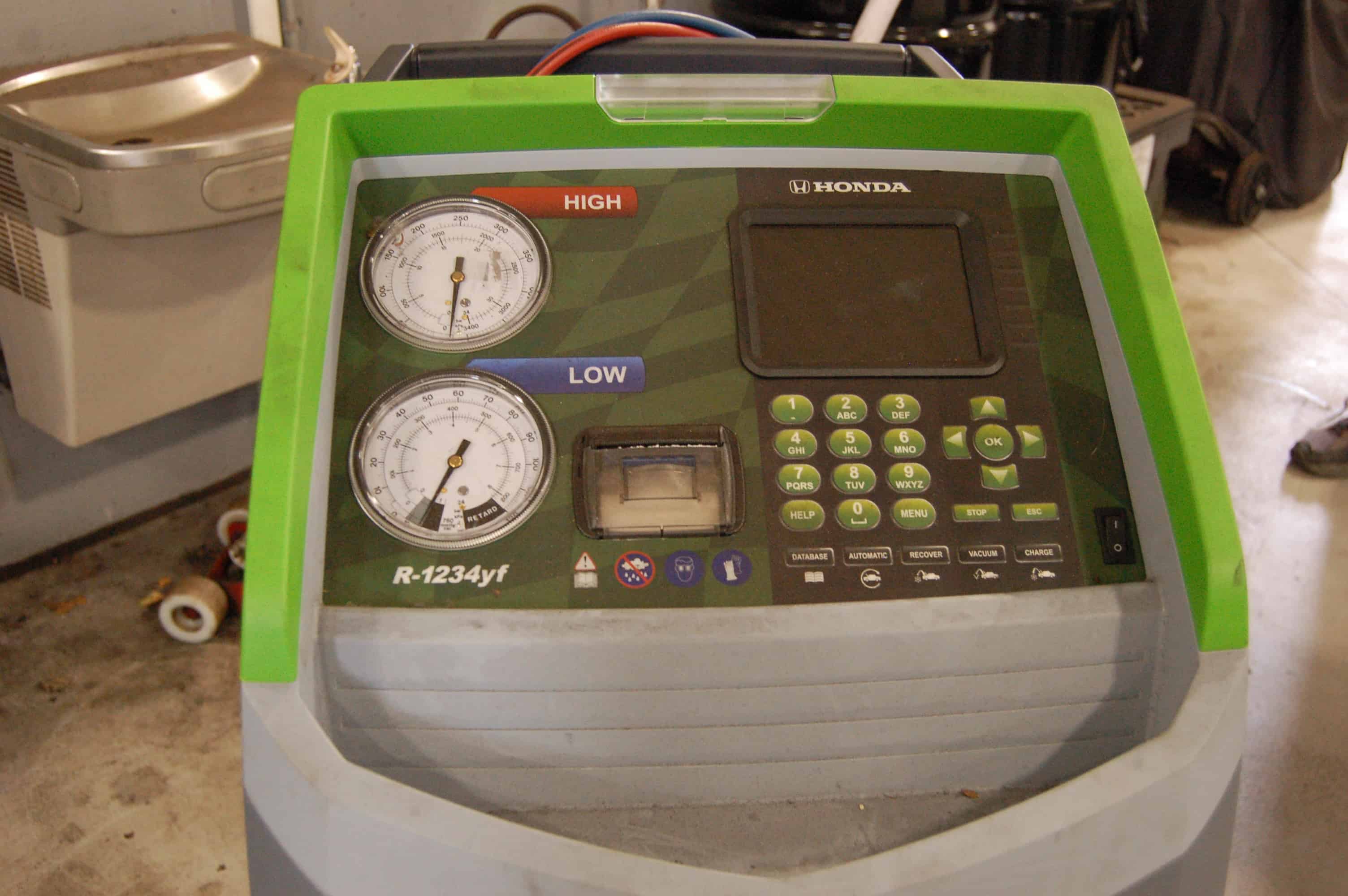
Like other machines that Robinair makes for the OEM market, this model is custom branded for Honda. Its model # is 42-1234, and while it’s similar to other versions, this one is accented in neon green and has Honda’s stylized name and logo printed just above the display screen. Robinair R/R/R machines are manufactured by Bosch Automotive Service Solutions at their factory in Owatonna, Minnesota. We’ve seen them specially branded for certain car manufacturers before (such as Toyota), but they’re also available with the standard Robinair markings as well.
Why did Honda change from the standard R-134a that’s long been the staple refrigerant in so many cars and trucks since the mid ‘90s? There are really two reasons, one of them being environmental and the other, regulatory.
We’ve known about the high GWP (Global Warming Potential) of HFC-134a for many years. In fact, GWP is one of the scales on which scientists measure how harmful a refrigerant is to the atmosphere. We’re all familiar with the current environmental conversation around carbon dioxide which causes global warming, and it’s actually CO2 that’s used as a baseline with an assigned value of 1 GWP.
R-134a’s GWP is 1430, meaning it’s 1,430 times more harmful to the environment than CO2. This is the main reason behind the regulation mandating a change to something less harmful to the planet.
But now that so much technical development has taken place with the more environmentally friendly HFO-1234yf, manufacturers are changing over their vehicles as major redesigns or new platforms come online. Doing so will help the environment by reducing the amount of highly potent greenhouse gases being used in mobile air conditioners (which carry the risk of being vented to the atmosphere, either on purpose as a result of negligent service, by normal system leakage, or by accident through a front end collision that punctures the A/C system). R-134a is one of these gases as it has an atmospheric lifetime of 14.6 years. R-1234yf on the other hand has a GWP of just 4 and dissipates within 11 days.
Then there’s the regulatory side of things. In June 2015, EPA issued rule # 20, mandating that all new vehicles beginning with the 2021 model year can no longer be filled with R-134a. Most OEMs are getting ahead of this time schedule, and taking advantage of EPA CAFE credits while they’re still available.
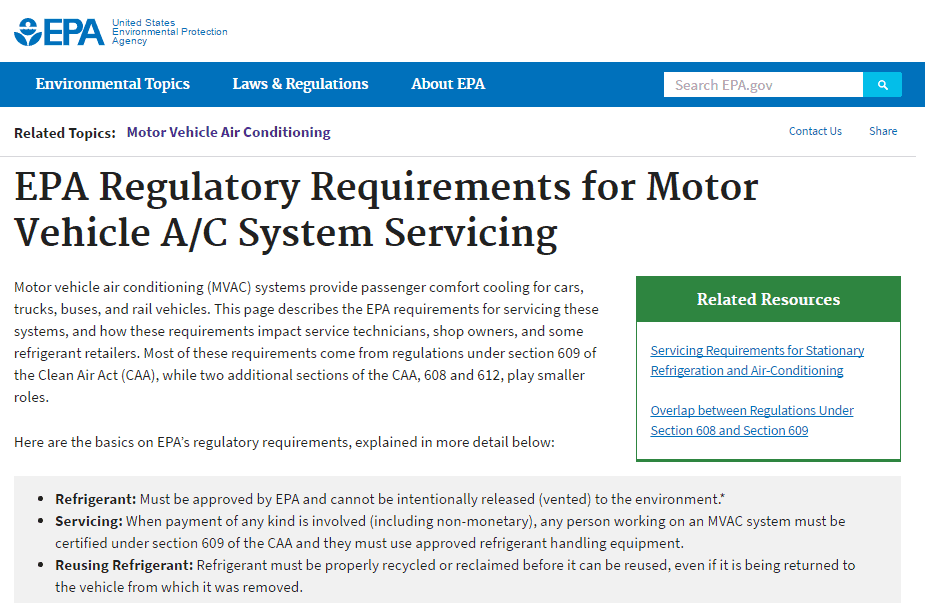
EPA’s SNAP website contains everything you need to know about Ozone history, refrigerant rules and regulations, as well as Section 609 Technician Certification, refrigerant recovery and record keeping requirements. The EPA website shown here can be reached at this link: https://www.epa.gov/mvac/epa-regulatory-requirements-motor-vehicle-ac-system-servicing
Getting back to our visit at JL Freed Honda, while we were there we also checked out several other models such as the Honda Civic, Accord Hybrid, Pilot and CR-V, and we’ll write more about their A/C systems on another MACS WordPress Blog. (Here’s a little preview: We not only found R-1234yf refrigerant being used in the 2017 Ridgeline, but also in 2016 Civic and Pilot models, too!)
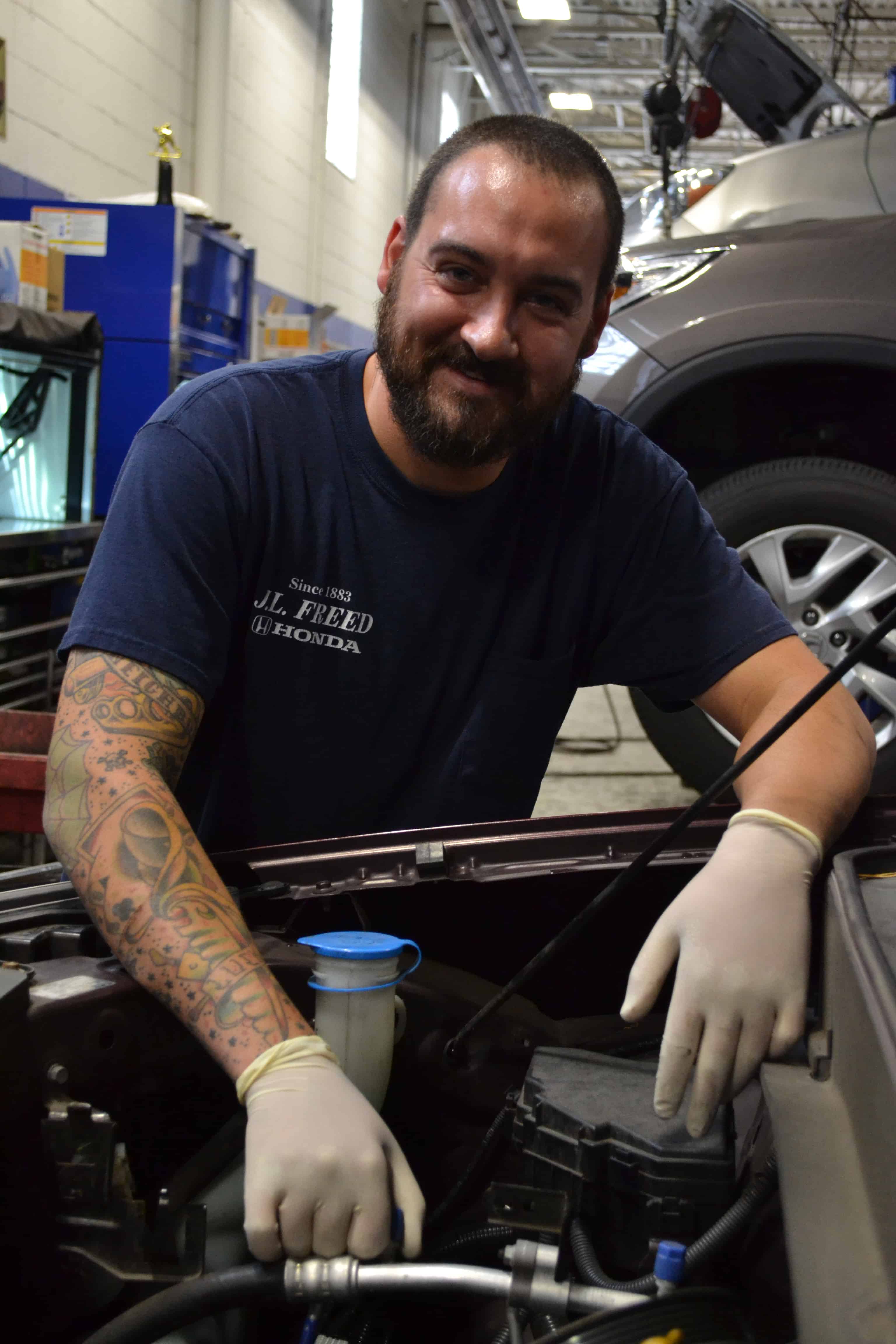
Service Technician Erik Hames had this 2016 Pilot in the shop for service (pre-delivery inspection), giving MACS the chance to take a closer look. At first glance, much of the A/C system looks similar to previous R-134a models, with the exception of the service ports, caps and A/C label.
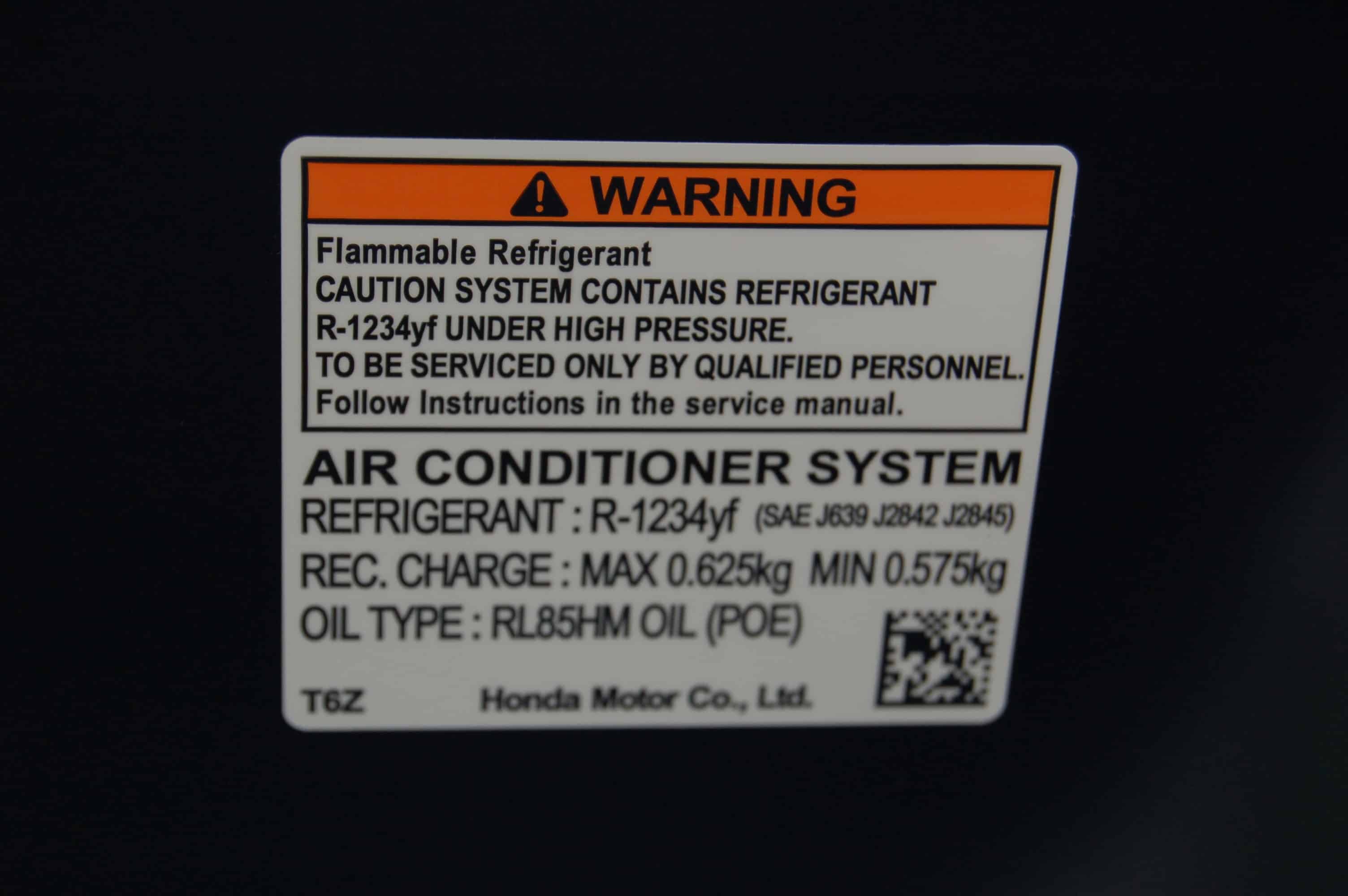
The redesigned 2017 Honda Ridgeline is the brand’s fourth to use the new R-1234yf refrigerant in a production vehicle. Loaded with symbols, this A/C label (otherwise known as the “639 Label”) packs a lot of information into a small space, including the required refrigerant charge for these pickups. The label gets its moniker from the SAE J639 Standard which requires its use. Ridgeline for 2017 uses a Delphi (MAHLE Behr) A10HF20 compressor with RL85HM (POE) oil. It calls for 0.600 kg of R-1234yf refrigerant, right in the middle of the 0.575-0.625 kg spec.
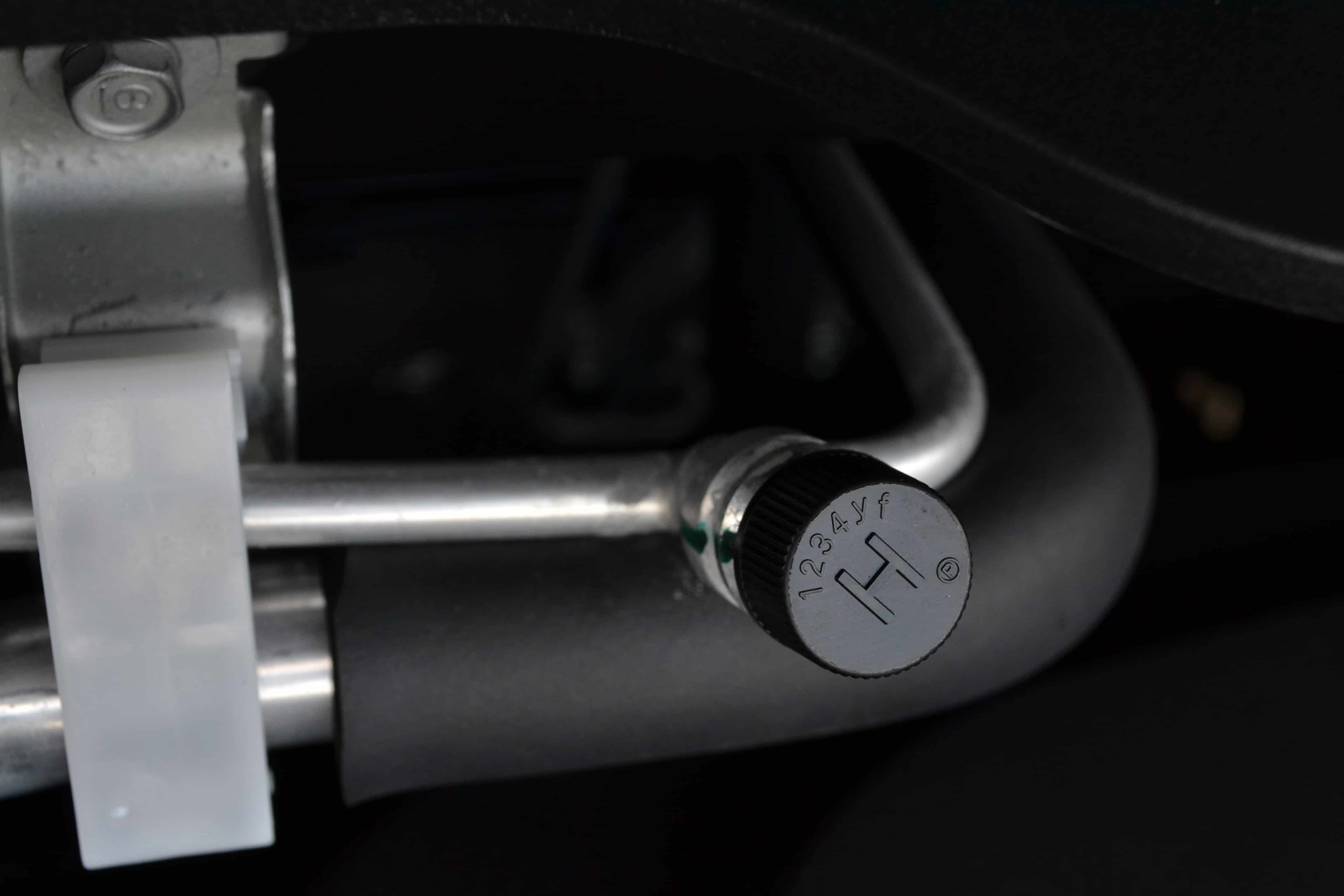
Ridgeline is also another example of a vehicle that uses R-1234yf refrigerant but DOES NOT use an ILHX (inline heat exchanger). Although it was once thought to be required for use with yf systems, testing has proved that if the vehicle’s condenser is efficient enough and has a large enough surface area to maximize heat transfer, it’s not necessary to add the additional part (at additional expense, too).
Have you worked on an R-1234yf vehicle in your shop? Why not take a few pictures and share your shop’s story with other MACS members! Visit our website www.macsw.org or drop a line to steve@macsw.org for more information.
More information about J.L. Freed Honda can be found on their http://www.jlfreedhonda.com website. You can also find out more about the 2017 Honda Ridgeline and other Honda vehicles by visiting automobiles.honda.com and clicking on RIDGELINE.
If you’re a service professional and not a MACS member yet, you should be!
You can E-mail us at macsworldwide@macsw.org .
To locate a Mobile Air Conditioning Society member repair shop in your area.
Click here to find out more about your car’s mobile A/C and engine cooling system.
Mobile A/C professionals should plan to attend MACS 2017 Training Event and Trade Show, February 15-18 at the Anaheim Marriott in Anaheim, CA.
Click here to see MACS current public training schedule.
The MACS website is located at www.macsw.org
